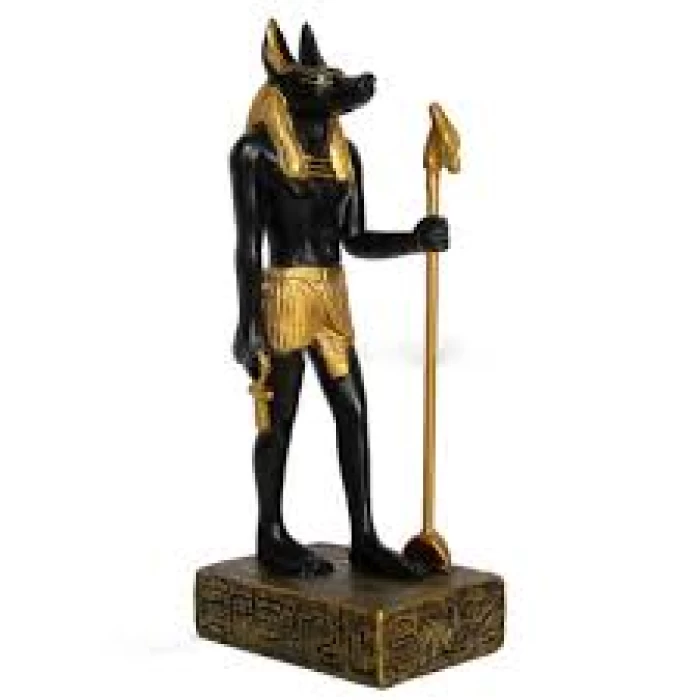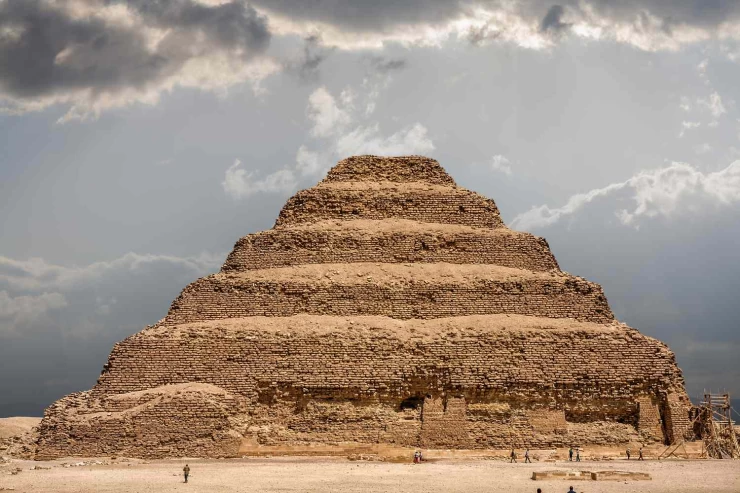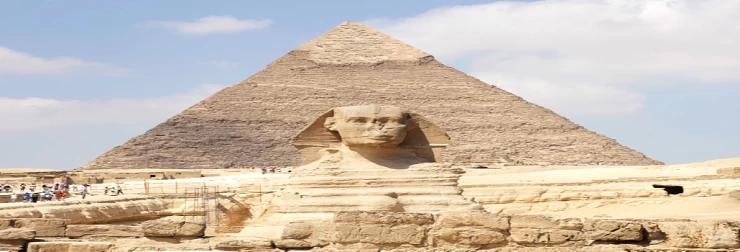
阿努比斯神 | 死城之神
女神哈索尔-神性的化身为快乐、爱和转变
在古埃及,女神哈索尔被认为是最伟大的神之一;她的崇拜和神话是复杂的,包括欢乐,美丽,爱和毁灭。 通常被描绘成一头牛或一头牛的女人,多方面的Hathor总是被揭示为古埃及人的宗教和文化习俗和信仰的基础。
快乐,美丽和音乐的女神。
Hathor被广泛称为欢乐,音乐,舞蹈和爱情的女神。 她是一切美丽的缩影,以任何形式表达艺术的荣耀。 古埃及打击乐器-sistrum-对她来说是神圣的;在崇拜中,音乐和舞蹈是她宗教活动的一部分,因为她是快乐和欢乐的女神。 她也被女性祈求爱、生育和保护,因为她作为一个美丽的女神被认为是在家庭和整个社区中培养和保护人们。
二元性:爱与死
与许多其他古代神灵一样,哈索尔也统治着死亡,在这方面证明了她本性的众所周知的二元性。 在这个黑暗的方面,她承担了母狮Sekhmet的致命形式;就像在myt中一样,她摧毁了人类。 在Amun Ra的指挥下,Hathor变成了Sekhmet,当他们不服从她时惩罚人类。 主要区别在于,哈索尔不能被崇拜为生命和爱情的青睐女神;当宇宙的平衡受到威胁时,她也不能以激烈的,破坏性的力量为幌子。
阿努比斯被称为冥界之神,但后来他与木乃伊的制作过程和葬礼游行有关。 他的名字被改变了,然后他被称为"Imy-ut"(他是防腐的地方),nub-ta-Djoser(神圣之地的领主)。 保存死者的尸体是古埃及的信仰之一,这就是为什么他们把他们的死者变成木乃伊,阿努比斯是木乃伊神。
阿努比斯有一个黑头,代表他是死者之神。 阿努比斯的完整人形可以在阿比多斯的拉美西斯二世神庙中看到。 阿努比斯的名字上还有一座美丽的雕像,它是在图坦卡门墓中发现的豺狼,着名的挖掘机霍华德*卡特在尼罗河西岸被称为国王谷的新王国墓地中发现的,现在在开罗的埃及博物馆展出。
墓地之神
我们可以看到很多献给阿努比斯的祈祷和仪式雕刻在埃及的许多古墓上。 他观察了死者木乃伊的过程,以确保它是正确的。 他陪伴着冥界的灵魂,同时检查他们对神的认识和他们的信仰。 当审判死者的心的时候,他把死者的心放在正义的天平上。
Ancient Egypt boasted many great monuments and left us a cultural legacy unparalleled among other civilizations, one that we are still proud of and distinguished by to this day.
One of the hallmarks of ancient Egypt's greatness was its recognition of the one god, its sanctification of him, and its devotion to him, offering sacrifices to him. Not only that, but its loyalty to the god extended to the construction of temples and the inscription of his symbols on walls. The god was represented in animals, plants, and birds, and was considered a symbol of the goodness that God bestowed upon the people of Egypt.
The title of god given to these sanctuaries was not intended to refer to the supreme god, the creator of the universe. Rather, it was a specific god associated with a specific aspect of life, such as agriculture, rain, life and death, the Nile, air, and fertility...Anubis, the ancient Egyptian deity of the dead, tombs, and mummification, is the most well-known of these gods.
Reason for his sanctification: The ancient Egyptians took Anubis as their god, seeing him as the archenemy of the dead, as he would dig up graves and tamper with the bodies of the dead. This was the reason behind his sanctification as the lord of the dead and protector of cemeteries, in order to ward off his evil.
Anubis was known as the god of the underworld but later he became associated with the mummification process and the funeral processions. His name was changed and he was then known as "Imy-ut" (He Who is In the Place of Embalming), nub-ta-Djoser (lord of the sacred land). Preserving the body of the dead person was one of the ancient Egyptian beliefs that's why they mummified their dead, Anubis was the mummified god.
The head of a jackal, an animal connected to graveyards and death, is frequently used to represent Anubis. This relationship was probably prompted by the ancient Egyptians' observations of jackals wandering near cemeteries. The presence of the jackal represented Anubis' function as a guardian of the deceased... Anubis, the symbol of judgment and balance, is the funerary symbol embodied in the image of a black animal from the wolf family (jackal).
The titles and names of this god are: "Leader of the Westerners" and "Leader of the Dead." Lord of the ancient Abydos necropolis. He takes the dog. From the end of the Old Kingdom, it became a title for the god Osiris after being merged with him.
The jackal is the sacred animal of the gods Wewawet and Anubis, the god of embalming.
The jackal, or wolf, led the deceased into the afterlife, sometimes taking the form of an animal (jackal). He was considered a great funerary god, and temples were dedicated to his worship in Middle Egypt, in a city the Greeks called Kenopoas, meaning "City of Dogs."
Anubis assumed various roles in different contexts. He was depicted as a protector of tombs as early as the First Dynasty (c. 3100 - c. 2890 BC). Anubis was also responsible for mummification. By the Middle Kingdom (c. 2055 - c. 1650 BC), he had been replaced by Osiris in his role as lord of the underworld. One of his most prominent roles was as a guide of souls into the afterlife.
We can see a lot of prayers and rituals dedicated to Anubis carved on many ancient tombs in Egypt. He watched the process of mummification of the dead to ensure it was proper. He accompanied the souls of the underworld while examining their knowledge of the gods and their faith. He placed the heart of the dead on the scales of justice when the judging of the heart took place.
Birth: He was the fourth son of the god "Ra". It was also believed that the god Anubis was the son of the goddess Nephthys and the god Osiris, after Nephthys, the wife of the god Set, fell in love with Osiris, the husband of Isis, and appeared to him in the form of his wife and became pregnant with Anubis. However, she was afraid of the god Set, so she abandoned Anubis. However, when Isis found out about the matter, she adopted him, and he later helped her in mummifying the god Osiris.

















